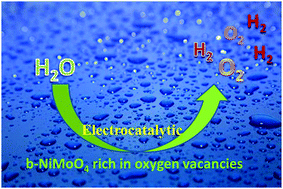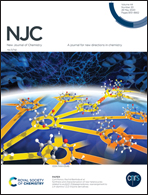A nickel molybdenum oxide nanoarray as an efficient and stable electrocatalyst for overall water splitting†
Abstract
Water splitting has been recognized as an important and promising solution for generating sustainable energy by electricity to mitigate environmental pollution and energy crisis, but the water splitting reaction is greatly hindered by the slow kinetics of the oxygen evolution reaction (OER). It is very important to develop efficient and stable catalysts in order to solve the problem of instability and poor activity of electrodes. Therefore, NiMoO4 nanosheets with abundant oxygen vacancies were prepared by the reduction of sodium borohydride to explore the relationship between the existence of oxygen defects and water splitting activity. Experimental characterization and density functional theory suggest that the NiMoO4 nanosheets with more oxygen vacancies (b-NiMoO4/NF) show superior water splitting activity and stability owing to smaller resistance, higher electrochemical surface area, higher adsorption energy of H2O molecules and smaller Gibbs free energy for hydrogen. Moreover, the b-NiMoO4/NF nanosheets electrode shows an enhanced water splitting performance with a low cell voltage of 1.55 V at 10 mA cm−2, which is smaller than that for untreated NiMoO4/NF(1.65 V) (a-NiMoO4/NF). This work revealed the relationship between the existence of oxygen defects and water splitting activity, providing new concepts for the development of efficient and robust catalysts.



 Please wait while we load your content...
Please wait while we load your content...